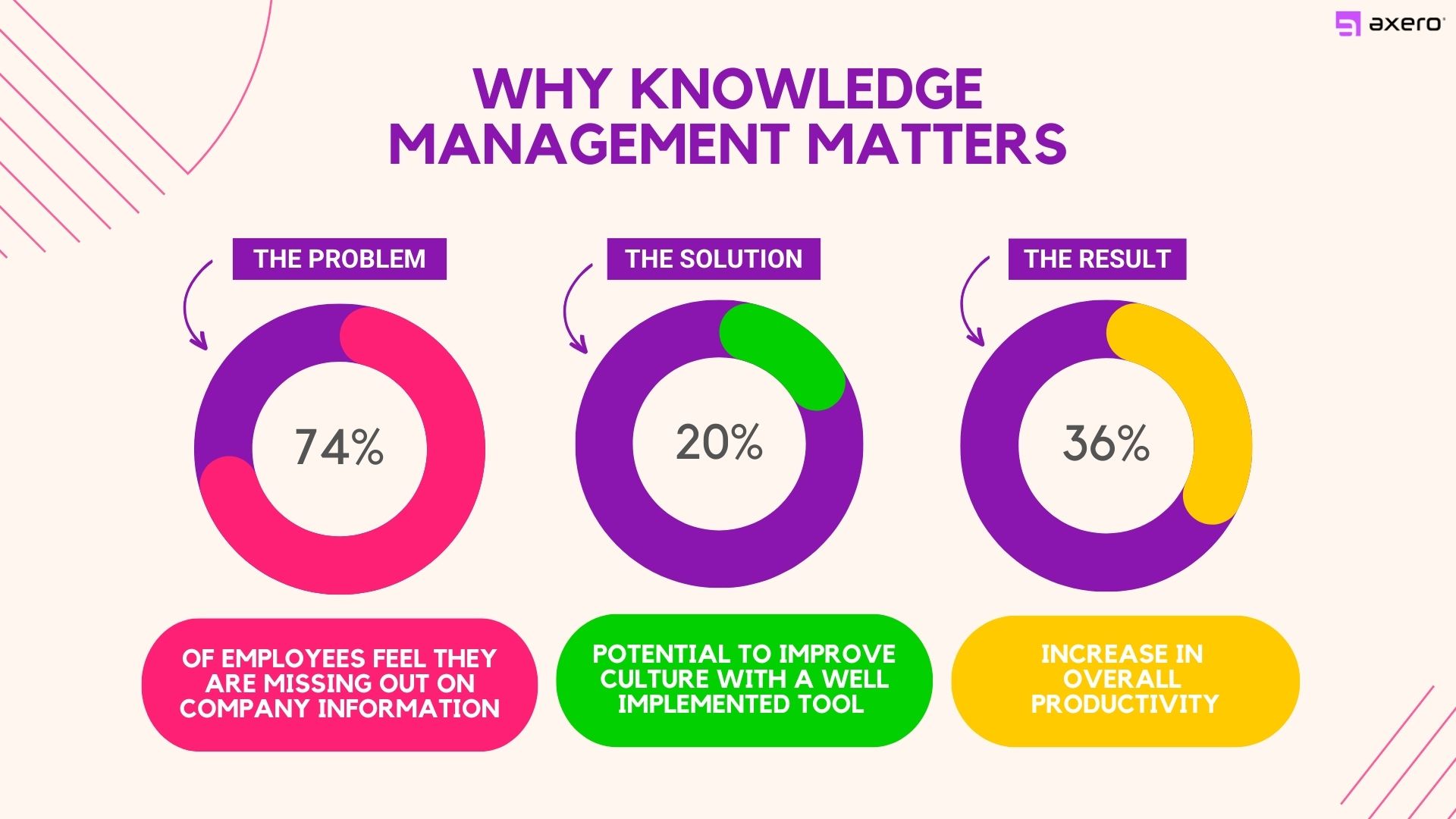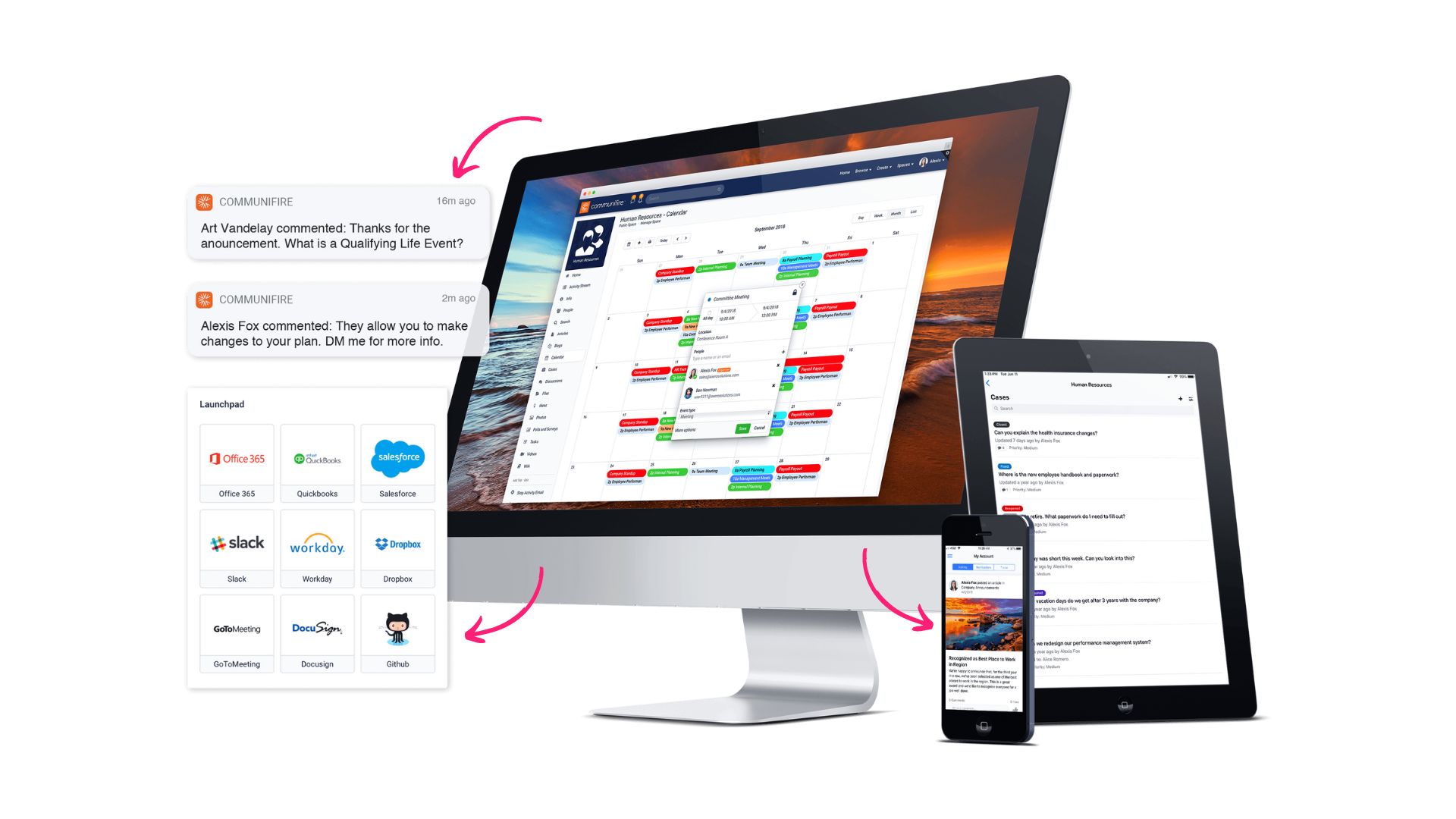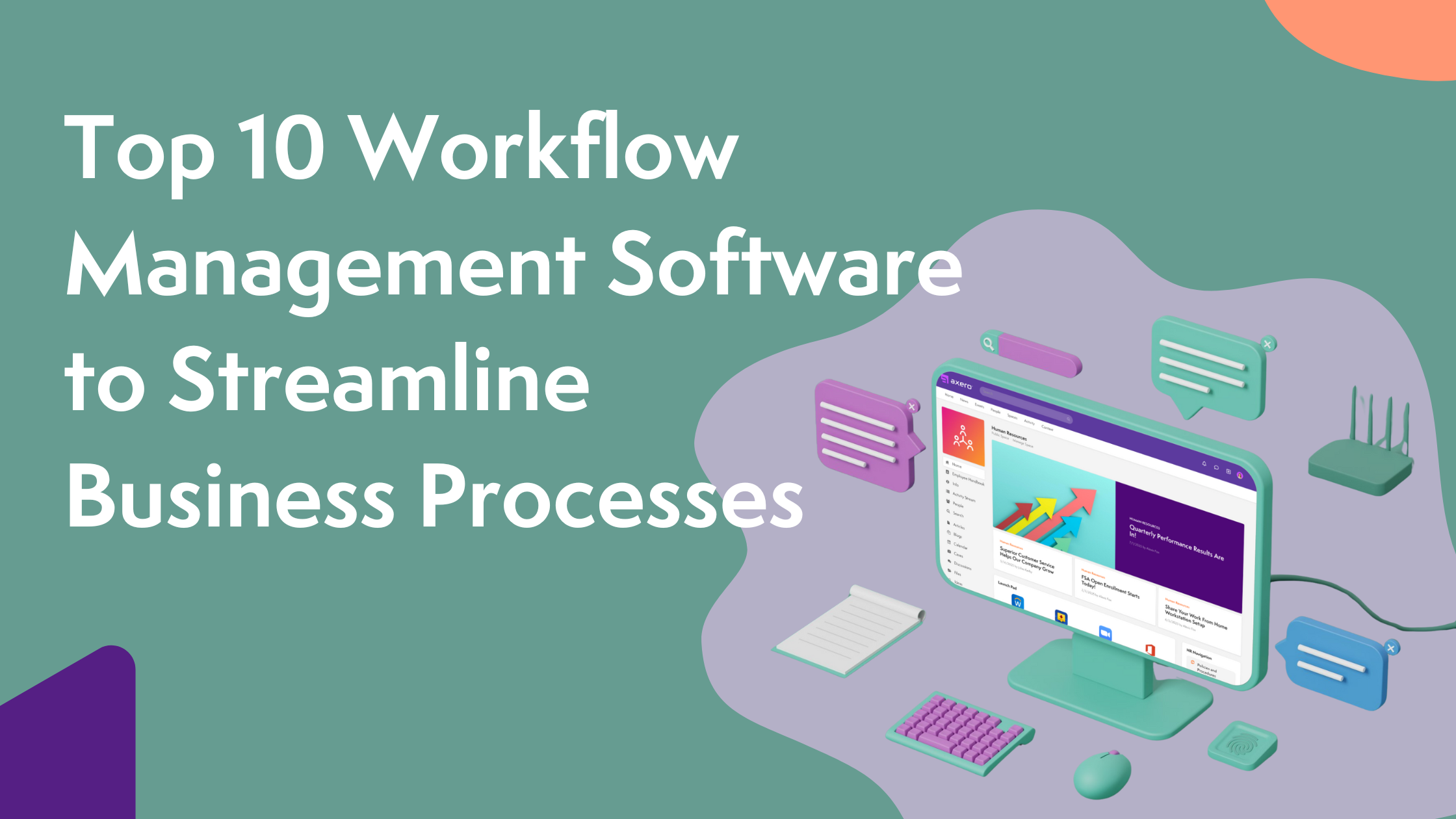With over 30,000 SaaS companies worldwide, 17,000 in the US alone, businesses are looking at a sea of tools and solutions that promise a better workplace and euphoric highs for all and for good.
Of course, investing in tech infrastructure is no joke. As of 2022, 18% of company tech budgets are focused on software use, followed by tech hosting. Statista also reveals that B2B IT spending among companies is valued at $1.5 trillion. It is not surprising that there is an increased emphasis on the return on investment (ROI) of enterprise software and application, intranet software included.
As a modern intranet platform ourselves, we think there are two primary use cases where modern intranets can provide a sound ROI.
Firstly, and most obviously, internal communications and human resources (HR) are most likely the first use case that comes to mind when you think about intranets. According to Gallup, 74% of employees feel that they are missing out on company information and news. That’s why organizations use intranets—they need a single, centralized hub for relaying messages and communicating with their entire workforce. This way, employees feel more engaged and are in the know about what is going on at work. Moreover, Deloitte found that a well-implemented tool can improve employee culture by 15-20%. And improving employee culture is linked with a 36% improvement in employee productivity.
Secondly, knowledge management is a promising area where you, and your company, can maximize ROI from your technology investments. It does matter how we put the right knowledge in the hands of the right employees at the right time for them to be most effective in their roles. You might be barking up the wrong tree if you calculate dollars saved or earned. However, McKinsey estimates that employees lose nearly 8 hours weekly to searching for information across systems, and organizations that implement intranet solutions can improve the time spent searching for information across systems by 30-35%. The true ROI of knowledge management lies, in this case, in improved efficiency and time savings.
All intranets help with the internal communications and HR use case, which has become table stakes. And ROI has not historically been easy to demonstrate. But where the most ROI exists is in the knowledge management use case, and it is the area where Axero has doubled down on.
What is knowledge management?
Knowledge management is a set of processes that govern the creation, distribution, and utilization of human intellect. Knowledge is integral to any organization, but it is not valuable in and of itself. It does not exist in a void. Information becomes valuable when it is accessed, communicated, or used.
Now, the question is, how and where can your staff access organizational knowledge? The first thing to consider is how knowledge flows through your organization. No matter the size or sector, knowledge flows through existing paths. These paths must be traced in order to identify information source points, critical functions that lead to knowledge creation, and risky bottlenecks that impede the information flow to the point of use. You need to create a map or delegate a knowledge manager to create one. This provides a blueprint from which to make changes and improvements.
Once you have identified knowledge flows, you can build a knowledge base where all your internal assets are stored and can be accessed anywhere and anytime. Your company knowledge base allows, for example, your customer support reps to find similar cases they are working on, your new joiners to find training guides, and your sales team to find email templates to handle sensitive deals.
How does knowledge management generate ROI?
Knowledge management differs from company to company. Different organizations have unique priorities, specific goals, and areas of emphasis based on their business strategies, objectives, and competitive advantages. What matters most to your business might not even be considered a factor for others.
According to the International Data Corporation (IDC), less than 1% of over 500 companies surveyed indicated no benefit from implementing knowledge management. This means there are clear business benefits that companies can maximize from knowledge management and distribution, if and when done properly.
1. Enhance decision-making
Modern knowledge management ensures that accurate and up-to-date information is available to decision-makers. Access to relevant information and resources helps in making informed decisions and reducing the risk of poor investment choices.
2. Increase efficiency and productivity
Efficient knowledge distribution systems help employees access the information they need to perform their tasks effectively. By reducing the time spent searching for information or reinventing the wheel, productivity can be increased, leading to better utilization of resources.
3. Avoid repetitive mistakes and redundant efforts
A knowledge base allows organizations to capture and document lessons learned from past experiences and mistakes, whether it be strategies that worked, the ones that didn’t, and the reasons behind both. When employees have access to organizational knowledge, they can learn from previous missteps, understand what went wrong, and take proactive measures to avoid making the same mistakes again.
4. Support innovation and problem-solving
A well-structured knowledge base facilitates knowledge sharing and collaboration among staff. This enables the development of innovative ideas, problem-solving, and process improvements.
5. Accelerate learning and training
Knowledge management systems can provide access to training materials, best practices, and learning resources. When employees have and can access organizational knowledge, they can learn at their own pace and refer back to the materials as needed.
6. Facilitate knowledge transfer
As an organization, you do your best to hire the best talents. You have spent thousands of dollars training your staff; they are an asset to your business. But what happens when they decide to leave? This is where the ROI of knowledge management really hits home.
When a team member or individual expert who possesses specialized knowledge or skills exits the company, effective knowledge management ensures that their knowledge and expertise are captured and retained within the company — legacy knowledge will continue to live on.
And we know the loss of company knowledge comes at a price. In fact, an analysis shows the average US enterprise-size business may be throwing $4.5 million down the drain in productivity annually just due to failing to preserve and share knowledge.
Let’s look at how Axero’s customers reap the benefits of knowledge management and distribution.
A secret ingredient that makes a high order of pizza
Axero works with a pizza restaurant chain that needs their information distributed to their franchise owners and store managers over 170+ branches across the US. The information ranges from updates to the menu, new promotions, how to order new pizza box packaging, and everything in between. It is easy to see why there is clear ROI here — the “information” is needed for their employees to run their stores effectively. So instead of digging through old emails and printouts, frontline pizza crews can log in to the company intranet on a desktop or a mobile app, review their notifications, and search for what they need and find it easily. And this customer reached 91% active users in the first month after launching!
A personalized service that captures tastes, needs and lifestyle
One of Axero’s customers is a global consumer e-commerce platform that needs a way to target knowledge and information to their customer-facing agents. With Axero’s knowledge management software, they are able to deliver relevant, personalized information, like promotions and clearance events on certain brands/products within certain regions, to their staff, who are then able to better serve their end customers.
A speedy response that reflects efficiency in the brand’s DNA
Another customer of ours is a world-renowned household appliance manufacturer who wants to equip their customer service representatives with product information to better support their customers. From follow-up forms and SKU sheets to sales promotions and frequently asked questions (FAQs) that can be accessed via a knowledge base, their agents achieve quicker response times when supporting customers, resulting in improved customer satisfaction and agent themselves.
Final notes on knowledge management ROI
As the economic environment continues to evolve, and C-suite executives continue to focus more and more on ROI in their tech stacks and new technologies, organizations would be remiss not to think about how they will define the clear business value they can get out of using platforms like Axero for knowledge distribution core to their business model, and consider the ROI from employee engagement and workplace culture as secondary.
Looking at the use cases we mentioned above, our customers are not only leveraging one use case or the other — a knowledge base within Axero’s intranet platform does both very well. What we are trying to highlight here is how the knowledge distribution use case yields a notably good ROI, whereas the internal communication and HI use case results in a relatively modest ROI.
We think these examples from our customers really resonate with what Don Cohen wrote in Harvard Business Review about how businesses can measure the ROI of knowledge management:
Knowing what you’re striving for with your knowledge management makes it much easier to determine whether you’re getting value for the money spent — even if the ROI never shows up on a balance sheet.
— Don Cohen




















 info@axerosolutions.com
info@axerosolutions.com 1-855-AXERO-55
1-855-AXERO-55


